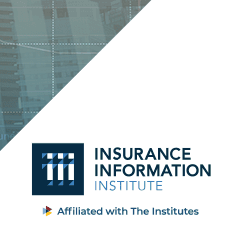
The COVID-19 pandemic continues to depress economic growth around the world, with nearly every country experiencing declines in gross domestic product (GDP) – the total value of goods and services produced. GDP growth for the world’s 10 largest insurance markets is expected to decrease by 6.99 percent in 2020, compared to Triple-I’s previous estimate of a 4.9 percent decrease.
Forward-looking growth proxies, such as interest rates, government spending, equity markets, and commodity prices, are sending mixed to negative messages about growth into 2021.
Against this backdrop, Triple-I experts report, the global insurance industry has continued to issue new policies, service existing ones, and process and pay claims. While the final numbers on the extent of the pandemic and recession’s impact on the industry won’t be clear until 2021-2022, early indicators point to flat premium growth in 2020 globally and to significant differences in how the pandemic, monetary policy, and the recession are affecting insurers in the United States versus abroad.
In its Global Macro and Insurance Outlook for the third quarter, published this week, Triple-I noted that global central banks kept benchmark interest rates mostly on hold in the third quarter at an average of 0.6 percent, reflecting the limits imposed by near-zero interest rates policies.
Concerns about lower long-term interest rates are increasing as global central banks have pushed rates even lower during the pandemic, the report says. In a recent survey, about 33 percent of U.S. insurers said they assume flat long-term benchmark rates, while 50 percent reported having changed, or say they are in the process of changing, their investment strategy. These changes are likely to accelerate now that the U.S. Federal Reserve officially changed the focus of its monetary policy and central banks around the world follow.
Interest rates matter because insurers get the bulk of their profits from investment earnings. U.S. insurers, in particular, rely on fixed-income financial instruments like corporate and government bonds. If lower interest rates put pressure on insurers’ investment earnings, they will have to compensate by raising premiums paid by policyholders or adjusting their risk profiles to reduce claim payouts.
“COVID-19 and lower economic activity continue to hinder premium growth in property, workers compensation, and auto,” the report says, “while a recent survey indicates that COVID-19 led to a reduction in life premium.”
The report says it’s too early to determine whether increasing demand for warranty, indemnity, and cyber coverage and a surge of interest in captive insurers will make up for downward pressure on premium growth across the industry.








